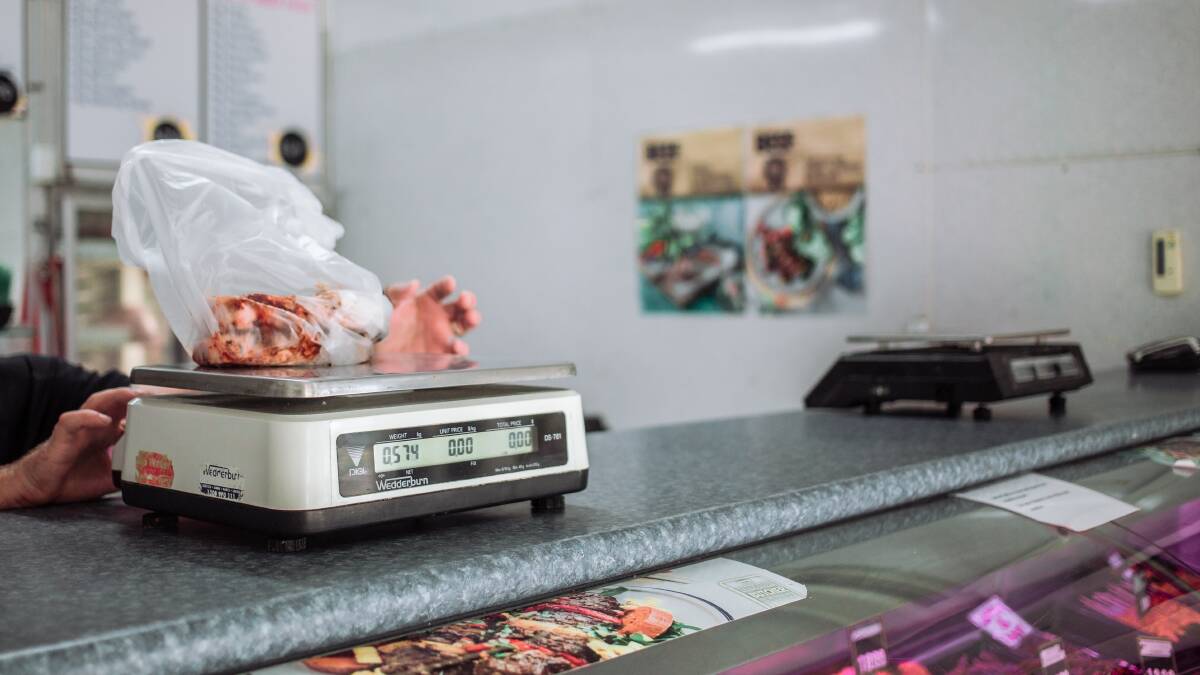
Processors will remain caught between super high cattle prices and plateauing beef consumption on the domestic market for at least the best part of 2022, judging by industry projections.
Subscribe now for unlimited access to all our agricultural news
across the nation
or signup to continue reading
Beef retail price growth is outpacing other proteins, putting downward pressure on consumption.
Although Meat & Livestock Australia projections are for Australians to continue eating beef at the same level for the next three years, it's clear there is now no ability for cattle prices to be passed to the end consumer from here, without turning people away from the product.
Since 2019, the Eastern Young Cattle Indicator has risen by 195 per cent but the retail beef price has not increased to the same extent, MLA market information manager Steve Bignell said.
Australian Bureau of Statistics data shows that for the 12 months to September 2021, beef retail prices went up 10.9 per cent.
"That contributed to inflationary pressures in the food category but by December it was more vegetables and beverages putting that inflationary pressure on," Mr Bignell said.
Quarter-by-quarter lifts in retail price have been met with consumption drops of a similar magnitude, although the higher price has offset the decline in volume to drive value growth, MLA's latest cattle industry projections showed.
Domestic consumption is forecast to hold steady for the next three years at 22.3 kilograms per person.
That is down on the 26kg consumed in 2017. Consumption has been gradually declining since but the thinking is that has now plateaued, given beef's position as the primary protein for Australians.
"Encouragingly, because people do see beef as a premium product, the total value of sales has not shrunk," Mr Bignell said.
ALSO SEE:
Extreme loss
Between virus infections affecting staffing levels and the price of cattle, January has been a horror month for processors.
Thomas Elders Markets' theoretical beef processor margin model showed a January average loss of $371 per head.
Analyst Matt Dalgleish said there was, however, a chance for some relief as cattle input costs have eased in recent weeks while key beef export values have firmed.
"And there is some hope on the horizon that margins will begin to normalise as we head into 2023/24," he said.
January was not the worst of the processor margin story since the EYCI began to skyrocket. The TEM model showed margins were at their worst around October last year, when losses per head slipped to $434.
The annual average processor margin for the 2021 season came in at a loss of $326 per head, over double the average annual losses recorded in 2020 of $130 per head.
Those margins are beyond the extreme loss boundary, according to Mr Dalgleish.
"Historically, the previous toughest trading environment for beef processors was the 2016 and 2017 herd rebuild phase when annual average margins recorded a loss of $129 and $121 per head, respectively," he said.
TEM says historical data and forecast cattle slaughter for 2022 suggests the annual average processor losses this year will be around $150 per head.
MLA data shows cattle slaughter for the first five weeks of 2022 was 92,000 head below the equivalent 2021 period.
This week, national cattle slaughter rose 39pc to 91,938 head but even at this level, it is still 8pc below 2021 levels.
China bans not limited to Australia
Reduced slaughter has translated to very low January beef export figures, which were back more than 10pc on January last year.
Still, forecasts for the beef export supply and demand equation look a bit more promising for 2022, according to Mecardo's Jamie-Lee Oldfield.
Plenty of markets are keen enough to continue paying premium prices, even with a slightly waning China market, she reported.
Incidentally, Australia is not the only beef supplying nation China has slapped suspensions on in recent times.
Reuters reported the economic powerhouse slammed its doors shut to imports of beef, dairy and beer from Lithuania this week amid a growing trade dispute over the Baltic nation's relations with Taiwan.
Lack of documentation was cited, although Lithuania's veterinary control agency says importing countries usually start by asking for any missing information.
Reuters explained that relations frayed after Lithuania allowed Taiwan to open a de facto embassy in its capital Vilnius last year, angering Beijing which regards the democratically-ruled island as its own territory.
Changing ways
Back on the domestic market, the increased beef retail prices, along with the pandemic, are seeing some shifts in the cuts consumers buy and the sales channels they use, MLA reports.
Mince, sausage, rump and sirloin are the fastest growing cuts for online retailers while stirfry, diced and casserole cuts, mince and rump are the most popular in stores.
"Consumer behaviour is changing," Mr Bignell said.
"People are now spending a billion dollars a month online on food. Online sales of beef jumped when we first went into lockdown and that trend has stayed. It's now a structural change."
The return to food service after each lockdown has also slowed, and the take-up, and development of, home cooked meals has intensified.
For all the big news in beef, sign up below to receive our Red Meat newsletter.


